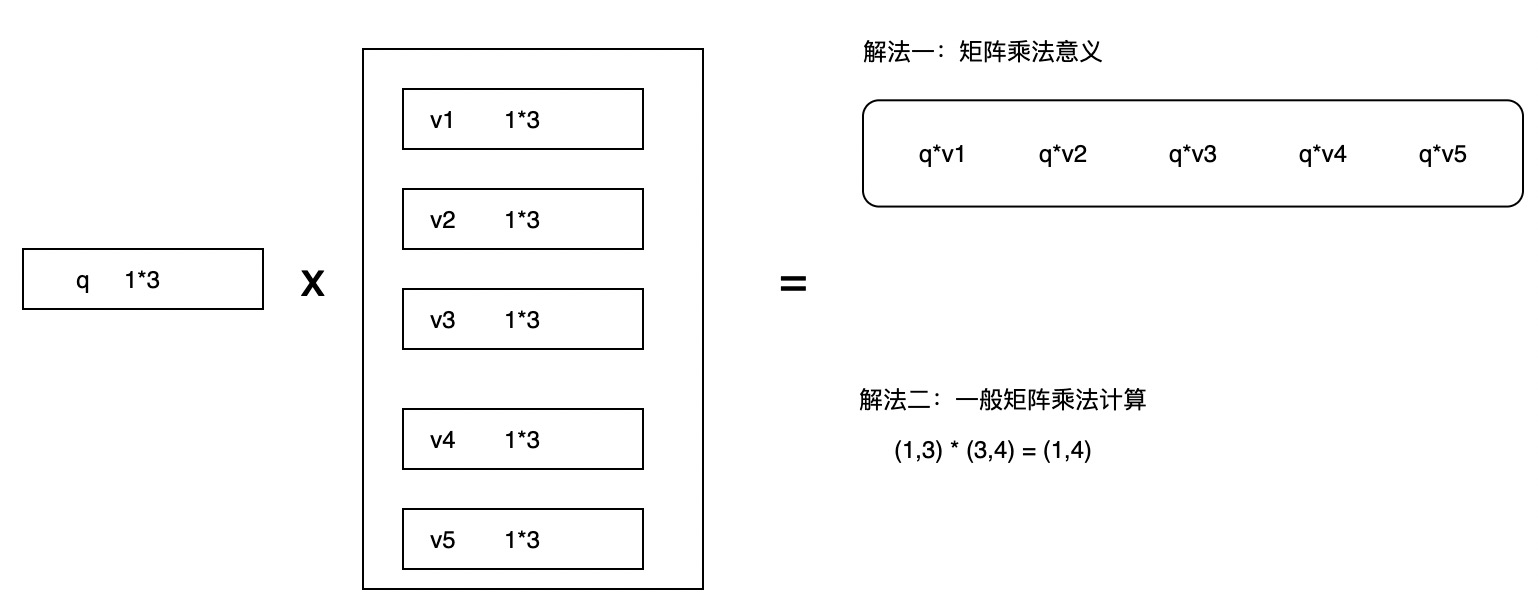
"*"和tf.multiply 属于元素级别的相乘,两个矩阵或者向量维度一直,对应位置相乘 维度保持不变
multiply(x,y,name=None)—实现元素级别的相乘
1)注意:x与y要有相同的数据类型,要是int都是int,要是float都是float 否则会报错
2)若y为数,x为向量或矩阵,则用y乘以x中的每一个元素:
x2 = tf.constant([[1.0, 1.1, 1.2], [1.3, 1.4, 1.5], [1.6, 1.7, 1.8]])
y2 = tf.constant(2.0)#这里的值同样需要是float型,若是int型,则会报错
z2 = tf.multiply(x2, y2)
结果为:[[ 2. 2.20000005 2.4000001 ]
[ 2.5999999 2.79999995 3. ]
[ 3.20000005 3.4000001 3.5999999 ]]
3) 若y为向量,x为矩阵,则必须满足:若y是行向量,则元素个数应与x的行数相等;若y是列向量,则需与x的列数相等:
x2 = tf.constant([[1.0, 2.0, 3.0], [1.0, 2.0, 3.0], [1.0, 2.0, 3.0], [1.0, 2.0, 3.0]]) # 4*3
y2 = tf.constant([1.0, 1, 2]) # 1*3
z2 = tf.multiply(x2, y2) # 等价于 z2= x2*y2
print("列元素一直自动复制行维度与相乘矩阵保持一致:", z2)
y3 = tf.constant([[1.0], [1], [2], [3]]) # 4*1
z3 = tf.multiply(x2, y2)# 等价于 z3 = y3 * z3
print("行元素一直自动复制列维度与相乘矩阵保持一致:", z3)
列元素一直自动复制行维度与相乘矩阵保持一致: tf.Tensor(
[[1. 2. 6.]
[1. 2. 6.]
[1. 2. 6.]
[1. 2. 6.]], shape=(4, 3), dtype=float32) tf.Tensor(
[[1. 2. 6.]
[1. 2. 6.]
[1. 2. 6.]
[1. 2. 6.]], shape=(4, 3), dtype=float32)
行元素一直自动复制列维度与相乘矩阵保持一致: tf.Tensor(
[[1. 2. 6.]
[1. 2. 6.]
[1. 2. 6.]
[1. 2. 6.]], shape=(4, 3), dtype=float32) tf.Tensor(
[[ 1. 2. 6.]
[ 1. 2. 6.]
[ 2. 4. 12.]
[ 3. 6. 18.]], shape=(4, 3), dtype=float32)
#coding=utf-8
import tensorflow as tf
if __name__ == '__main__':
a = tf.constant([1 ,2, 3])
b = tf.constant([2 ,3, 4])
res_ab = a*b
print("res_ab", res_ab)
m_a = tf.constant([[1 ,2, 3],
[1, 2, 3]])
m_b = tf.constant([[2, 3, 4],
[2, 3, 4]])
res_mab = m_a * m_b
print("res_mab", res_mab)
tf.matmul 符合数学上一般矩阵乘法的定义,注意matmul 对多维矩阵就是最后两个维度进行变换相乘
#coding=utf-8
import tensorflow as tf
if __name__ == '__main__':
print("--------------matmul-------------------")
m_a = tf.constant([[1 ,2, 3],
[1, 2, 3]])
m_b = tf.constant([[2, 3, 4],
[2, 3, 4]])
mult_res = tf.matmul(m_a, m_b, transpose_b=True)
print("mult_res:",mult_res)
MultiHeadAttention 实现代码
q = self.wq(q) # (batch_size, seq_len, d_model)
k = self.wk(k) # (batch_size, seq_len, d_model)
v = self.wv(v) # (batch_size, seq_len, d_model)
q = self.split_heads(q, batch_size) # (batch_size, num_heads, seq_len_q, depth)
k = self.split_heads(k, batch_size) # (batch_size, num_heads, seq_len_k, depth)
v = self.split_heads(v, batch_size) # (batch_size, num_heads, seq_len_v, depth)
# scaled_attention.shape == (batch_size, num_heads, seq_len_q, depth)
# attention_weights.shape == (batch_size, num_heads, seq_len_q, seq_len_k)
scaled_attention, attention_weights = scaled_dot_product_attention(
q, k, v, mask)
按照论文中的 思路 需要计算多个head 的scale dot product attention,再将attention_weight与 计算结果,再concat,基本按照普通的实现方式就是串行执行
但是利用矩阵变换及矩阵相乘的并行计算,现在将x的embedding通过fc 映射成一个 head**depth长度的向量,然后进行拆解成将[batch, seq_len, num_head, depth]的向量,然后调整成 scale_dot_product_attetion 可以处理的维度,qkv均这样处理,然后进行attention计算,得到最终结果[batch,_size, num_head, seq_length, depth],再进行一次维度变化,去掉num_head这一维,depth变化为num_head*depth
# 缩放点积注意力
def scaled_dot_product_attention(q ,k ,v ,mask):
'''
Args:
-q : shape==(...,seq_len_q,depth)
-k : shape==(...,seq_len_k,depth)
-v : shape==(...,seq_len_v,depth_v)
- seq_len_k = seq_len_v
- mask: shape == (...,seq_len_q,seq_len_k) 点积
return:
output:weighted sum
attention_weights:weights of attention
'''
# shape == (...,seq_len_q,seq_len_k)
# embedding 向量算法内积
# 矩阵乘法的最后一维进行相乘,其他模块基本不动
matmul_qk =tf.matmul(q, k, transpose_b=True)
dk = tf.cast(tf.shape(k)[-1], tf.float32)
scaled_attention_logits = matmul_qk / tf.math.sqrt(dk)
if mask is not None:
# 10的负九次方比较大,会使得需要掩盖的数据在softmax的时候趋近0
scaled_attention_logits += (mask * -1e9)
# shape == (...,seq_len_q,seq_len_k)
attention_weights = tf.nn.softmax(scaled_attention_logits, axis=-1)
# shape==(...,seq_len_q,depth_v)
output = tf.matmul(attention_weights, v)
return output, attention_weights
def print_scaled_dot_attention(q, k, v):
temp_out, temp_att = scaled_dot_product_attention(q, k, v, None)
print("Attention weights are:")
print(temp_att)
print("Outputs are:")
print(temp_out)
从scale_dot_product_attetion 体会到的矩阵乘法的向量乘法意义:
weight = tf.constant([[1, 2, 3, 1], [4, 5, 6, 1], [7, 8, 9, 1]], dtype=tf.float32) # (3 ,4)
value = tf.constant([[1, 1, 1], [1, 1, 1], [1, 1, 1], [1, 1, 1]], dtype=tf.float32) # (4, 3)
weight_value =tf.matmul(weight, value)
print(matmul_qk)
tf.Tensor(
[[ 7. 7. 7.]
[16. 16. 16.]
[25. 25. 25.]], shape=(3, 3), dtype=float32)
weight向量 (3,4) 与 value (4,3)向量进行 矩阵乘法
从直观意义上讲是 对 value 每个行向量 进行加权求和,weight列的序号,对应 value行向量序号,然后让对应单个值 与一个向量进行相乘,在讲4列整体累加,这个符合矩阵乘法的几何意义。

这个是权重计算原理
还有一个是scale_dot_product
scale 是指softmax
dot_product指的是点积计算权重
两个矩阵相乘,其实计算的这个行向量和每一个列向量的相关性,需要注意一点 q向量不需要转置,k向量需要在mutli前进行转置
import tensorflow as tf
w = tf.Variable([[0.4], [1.2]], dtype=tf.float32) # w.shape: [2, 1]
x = tf.Variable([range(1,6), range(5,10)], dtype=tf.float32) # x.shape: [2, 5]
y = w * x # 等同于 y = tf.multiply(w, x) y.shape: [2, 5]
sess = tf.Session()
init = tf.global_variables_initializer()
sess.run(init)
print sess.run(w)
print sess.run(x)
print sess.run(y)
Python 之 numpy 和 tensorflow 中的各种乘法(点乘和矩阵乘)
https://blog.csdn.net/weixin_45459911/article/details/107852351
Tensorflow函数学习笔记2—tf.multipy和tf.matmul
tf中multiply、matmul、dot、batch_dot区别
最后
以上就是威武缘分最近收集整理的关于TF乘法之multiply、matmul、*的全部内容,更多相关TF乘法之multiply、matmul、*内容请搜索靠谱客的其他文章。








发表评论 取消回复